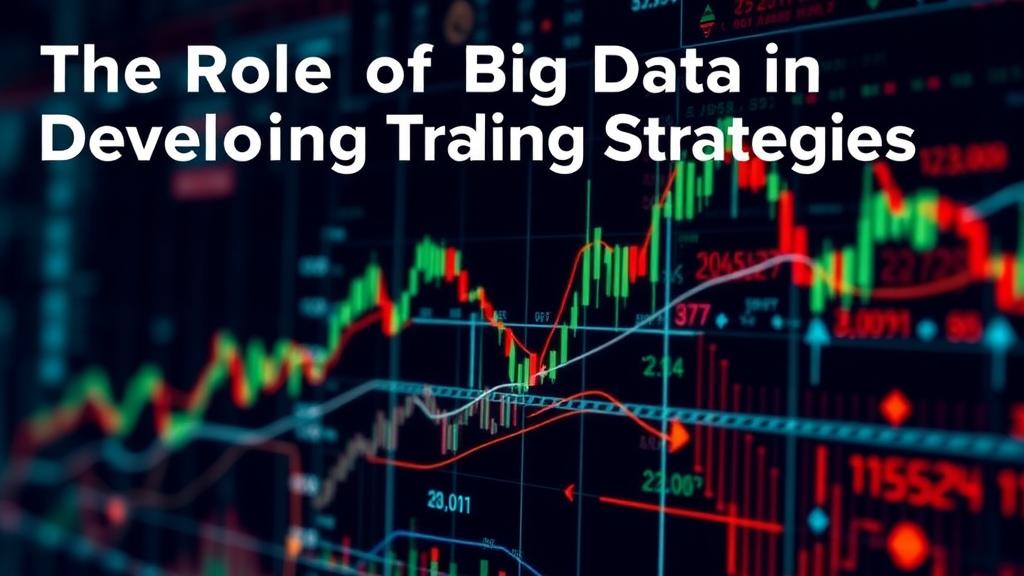Inviting Exploration of Advanced Strategies
Curious about how advanced algorithms are influencing investment strategies? Let’s dive into the mechanics of modern trading.
The Role of Big Data in Developing Trading Strategies
In the fast-paced world of finance, making informed decisions is paramount. Traders and investors are continually searching for an edge that can lead to higher returns on their investments. Enter big data — a game-changing force that has revolutionized how strategies are developed and executed in trading. With vast volumes of data available at our fingertips, understanding how to harness this information can be the difference between success and failure in the trading arena. This article delves into the role of big data in developing trading strategies, exploring its components, applications, and implications.
Before diving into its role in trading, it’s essential to grasp what big data entails. Big data refers to large, complex datasets that traditional data processing applications cannot handle efficiently. In finance, big data encompasses various information types, including:
- Market Data**: Prices, volumes, and historical trends of securities.
- Alternative Data**: Non-traditional sources like social media sentiment, satellite imagery, and web traffic.
- Economic Data**: Macroeconomic indicators such as GDP, unemployment rates, and inflation data.
- News Data**: Financial news articles, press releases, and economic forecasts.
- The characteristics of big data can be summed up by the “Three Vs”:
- **Volume**: The sheer amount of data generated every second.
- **Velocity**: The speed at which data is created and needs to be processed.
- **Variety**: The diverse formats and sources of data available.
The Importance of Big Data in Trading Strategies
Big data plays a crucial role in developing trading strategies by providing insights that were previously inaccessible. Here are some ways in which it enhances trading:
Enhanced Decision-Making
With the accumulation of vast datasets, traders can make more informed decisions. By analyzing historical price movements and correlating them with economic indicators, traders can:
- Identify patterns and trends.
- Predict future price movements.
- Manage risks more effectively.
Real-Time Analysis
The velocity of big data allows traders to receive and analyze information in real-time. This capability is vital for high-frequency trading (HFT) strategies, where every millisecond counts. Real-time data analysis enables traders to:
- Execute trades based on up-to-the-minute market conditions.
- React swiftly to news events or market anomalies.
- Adjust trading strategies dynamically.
Predictive Analytics
Predictive analytics uses statistical algorithms and machine learning techniques to forecast future events. In trading, this can involve:
- Developing models that predict stock price movements based on past data.
- Utilizing sentiment analysis from social media to gauge market sentiment.
- Identifying correlations between different assets to optimize portfolio allocation.
Techniques for Analyzing Big Data in Trading
To leverage big data effectively, traders employ various techniques and tools. Below are some prominent methods used to analyze data for trading strategies:
Data Mining
Data mining involves extracting useful patterns from large datasets. In trading, data mining can help identify:
- Historical price patterns that indicate future movements.
- Clusters of similar assets that respond similarly to market changes.
Machine Learning
Machine learning leverages algorithms to learn from data and improve predictions over time. Popular machine learning applications in trading include:
- Supervised Learning**: Used to predict price movements based on labeled historical data.
- Unsupervised Learning**: Helps in finding hidden patterns or groupings in data without predefined labels.
Sentiment Analysis
Sentiment analysis involves evaluating public sentiment about a stock or market through data from social media, news articles, and forums. By analyzing this data, traders can:
- Gauge overall market mood and its potential impact on stock prices.
- Identify bullish or bearish signals that may not be evident through traditional analysis.
Algorithmic Trading
Algorithmic trading employs predefined rules based on data analysis to execute trades automatically. Traders can set algorithms to:
- Follow technical indicators based on big data analysis.
- Execute trades based on real-time news sentiment or economic data releases.
Real-World Applications of Big Data in Trading
Several firms have successfully integrated big data into their trading strategies. Here are a few real-world applications:
Hedge Funds and Quantitative Trading Firms
Many hedge funds have turned to big data analytics to develop quantitative trading strategies. For instance:
- Two Sigma**: This hedge fund uses machine learning and big data to analyze various factors, including social media sentiment and economic indicators, to guide their trading decisions.
- Renaissance Technologies**: Known for its Medallion Fund, Renaissance employs complex mathematical models and extensive data analysis to identify trading opportunities.
Retail Trading Platforms
Retail trading platforms have also begun to incorporate big data tools. For example:
- Robinhood**: This platform provides users with access to market data and trend analysis, helping them make more informed trading decisions.
- TradingView**: By offering social networking features, TradingView allows users to share insights derived from big data analysis, enhancing collective trading knowledge.
High-Frequency Trading (HFT)
High-frequency traders rely heavily on big data to execute thousands of trades per second. These firms use:
- Advanced algorithms that analyze market data and execute trades in milliseconds.
- Data feeds that provide real-time market information to identify profitable opportunities immediately.
Challenges and Considerations
While big data offers numerous advantages, it also poses several challenges that traders must navigate:
Data Quality
The accuracy of trading decisions hinges on the quality of the data analyzed. Poor-quality data can lead to erroneous conclusions and financial losses. Traders must ensure they are using:
- Reliable data sources.
- Robust data cleaning processes to remove inaccuracies.
Overfitting Models
When using machine learning, there’s a risk of overfitting, where a model performs well on historical data but poorly on new data. To mitigate this risk, traders should:
- Validate models using out-of-sample data.
- Continuously update and refine their models based on new information.
Regulatory Compliance
With the increased use of big data in trading, regulatory bodies are scrutinizing how firms collect and utilize data. Traders must ensure compliance with:
- Data privacy laws.
- Financial regulations concerning market manipulation and fair trading practices.
Conclusion
Big data has undeniably transformed the landscape of trading strategies, providing traders with unprecedented insights and analytical capabilities. By leveraging advanced techniques such as predictive analytics, sentiment analysis, and machine learning, traders can enhance their decision-making processes and capitalize on market opportunities. However, as the financial world continues to embrace big data, it is essential to remain vigilant against challenges like data quality, model overfitting, and regulatory compliance.
As we look ahead, the integration of big data in trading will likely continue to evolve, presenting both exciting opportunities and challenges for traders. Embracing this data-driven approach is not merely an option; it is becoming a necessity for those seeking success in an increasingly complex and competitive market.



